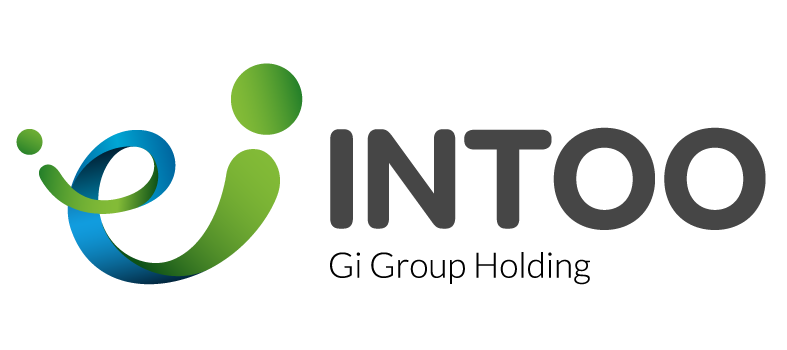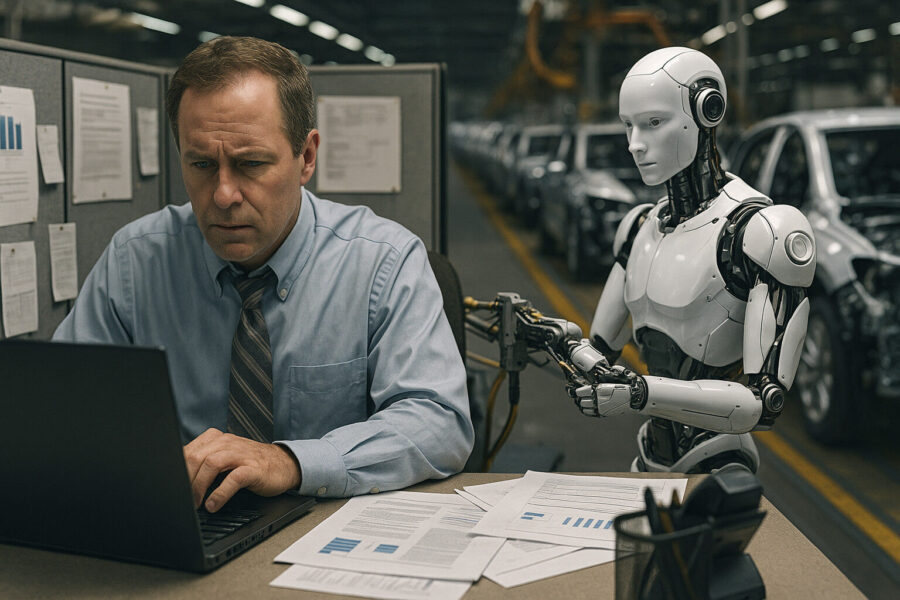Originally published at HRreview by William Furney
Artificial intelligence could replace up to 40 percent of jobs and automate more than half of all work hours with current technology, according to a new report from research group the McKinsey Global Institute.
The report found that if companies redesigned workflows to fully adopt today’s available AI and robotics tools, 57 percent of hours worked in the US economy could be automated. While not all of these changes are imminent, McKinsey said many companies are already beginning to restructure operations in ways that reduce the need for human labor.
The research pointed to slowing hiring in fields such as administrative support, programming and paralegal services. Many of these roles involve drafting, reviewing and routine reasoning — tasks now increasingly managed by large language models and AI agents.
Physical jobs such as warehouse operations and machine handling are also seen as highly automatable. Jobs involving repetitive, dangerous or routine manual work are among the most exposed to automation, the report said. “People-focused skills such as coaching face the least exposure to automation, while manual and routine skills like invoicing face the most.”
Human roles harder to replace
While the potential scale of disruption is large, McKinsey stressed that not all roles are equally affected. Around one third of US jobs involve tasks that are significantly harder for machines to replicate.
Nursing and caregiving were cited as examples of roles requiring human presence, dexterity, empathy and responsiveness. The report estimated that 70 percent of tasks performed by healthcare support staff are unlikely to be automated in the near future.
Jobs that demand real-time judgment, flexibility and decision-making in unpredictable environments — such as maintenance, repair and some on-site trades — were also considered difficult to automate. Tasks that require physical dexterity, adaptability and interpersonal skills will remain the domain of humans, the report says.
Rethinking work, not just tasks
Rather than automating one task at a time, McKinsey said organisations would need to rethink entire workflows to unlock productivity gains. The report estimated that workflow redesign using AI and robotics could generate $2.9 trillion annually in economic value by 2030.
Human work would shift in response, with more time spent instructing AI systems, interpreting results and guiding decision-making. While some roles may disappear, others will evolve or emerge.
A third of jobs across sectors such as education, legal services and finance are expected to use AI in a hybrid way — supporting administrative tasks, content generation and analysis, while leaving interpretation and judgment to human professionals.
New roles already emerging
McKinsey said the rise of AI was already creating new categories of work. These include system coordinators who manage AI agents, safety specialists who ensure model reliability and technicians who physically maintain robotics infrastructure.
Companies such as Klarna, which recently listed on the New York Stock Exchange, were cited as examples of firms growing revenue without expanding headcount by embedding AI across business functions. Law firm Clifford Chance and telecommunications company BT have also reduced administrative staff through AI adoption.
However, McKinsey cautioned that policy decisions and investment levels would determine how widely and quickly AI was deployed. The barrier to adoption comes from policy choices and spending on implementation and development, the report said.
Younger workers hit first
Separate research from Stanford University, cited in the McKinsey paper, found that workers aged 22 to 25 in the most AI-exposed roles had already experienced a 13 percent fall in employment. Older workers in the same fields had not seen the same decline, suggesting that early-career roles may bear the brunt of automation-related disruption in the short term.
Professions previously considered secure — including finance, legal and IT — are now being reshaped by AI agents able to perform core functions more quickly and at lower cost. McKinsey said employers would need to take a long-term view and prepare to retrain displaced workers or redeploy them into human-centred roles.
Automation still needs people
Despite the warnings, McKinsey said human labour would remain essential in the age of AI. Even the most advanced models still require supervision, context-setting and ethical oversight. Emotional intelligence, creative thinking and cultural understanding continue to lie beyond the reach of current systems.
The report also stressed that AI adoption would not eliminate jobs outright in most cases, but rather change the nature of work and the skills required. For HR and business leaders, the challenge would be to “build skill partnerships” between humans and machines.
McKinsey urged companies to invest in workforce transition planning, not just technology. This includes upskilling employees, redesigning roles, and ensuring that AI systems are introduced in ways that complement — rather than replace — human capabilities.

